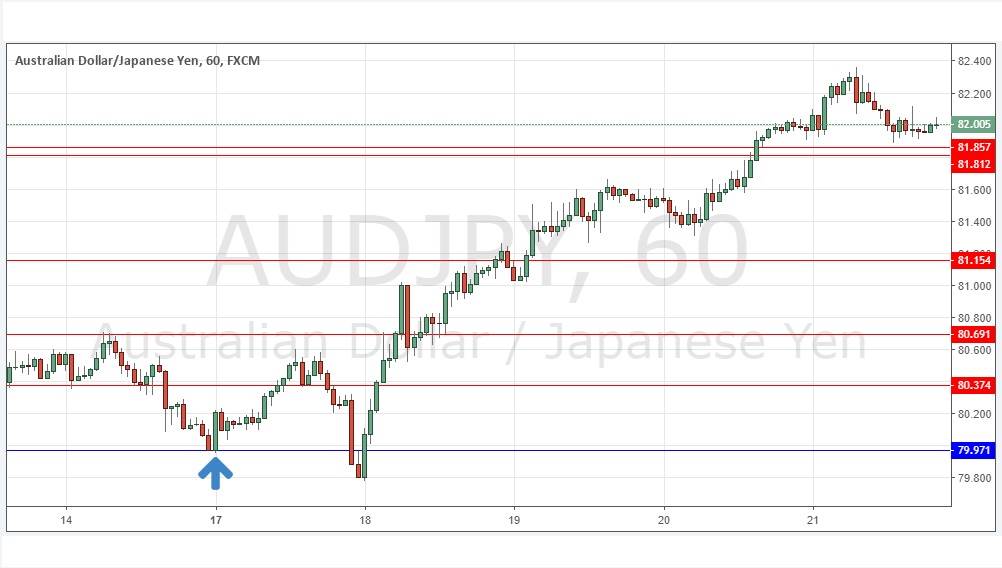This week we’ll begin with our monthly and weekly forecasts of the currency pairs worth watching. The first part of our forecast is based upon our research of the past 16 years of Forex prices, which show that the following methodologies have all produced profitable results:
- Trading the two currencies that are trending the most strongly over the past 3 months.
- Assuming that trends are usually ready to reverse after 12 months.
- Trading against very strong counter-trend movements by currency pairs made during the previous week.
- Buying currencies with high interest rates and selling currencies with low interest rates.
Let’s take a look at the relevant data of currency price changes and interest rates to date, which we compiled using a trade-weighted index of the major global currencies:
Monthly Forecast September 2018
For the month of September, we forecasted that the best trade would be short AUD/USD. The performance to date is as follows:
Currency Pair | Forecast Direction | Interest Rate Differential | Performance to Date |
AUD/USD | Short ↓ | 0.50% (2.00% - 1.50%) | -1.33% |
Weekly Forecast 23rd September 2018
Last week, we made no forecasts, as there were no strong counter-trend movements.
This week, we forecast that the AUD/USD currency pair will fall in value.
44% of the important currency pairs or crosses moved by more than 1% value over the past week. This volatility is relatively higher, and we expect it to be higher still over the coming week.
This week has been dominated by relative strength in the Australian Dollar, and relative weakness in the Japanese Yen.
You can trade our forecasts in a real or demo Forex brokerage account.
Previous Monthly Forecasts
You can view the results of our previous monthly forecasts here.
Key Support/Resistance Levels for Popular Pairs
We teach that trades should be entered and exited at or very close to key support and resistance levels. There are certain key support and resistance levels that should be watched on the more popular currency pairs this week, which might result in either reversals or breakouts:
Currency Pair | Key Support / Resistance Levels |
AUD/USD | Support: 0.7274, 0.7231, 0.7197, 0.7129 Resistance: 0.7321, 0.7382, 0.7479, 0.7510 |
EUR/USD | Support: 1.1732, 1.1659, 1.1609, 1.1566 Resistance: 1.1770, 1.1875, 1.1897, 1.1937 |
GBP/USD | Support: 1.3030, 1.2951, 1.2894, 1.2816 Resistance: 1.3217, 1.3350, 1.3482, 1.3521 |
USD/JPY | Support: 111.66, 111.43, 111.31, 111.08 Resistance: 113.13, 114.18, 114.74, 115.97 |
AUD/JPY | Support: 81.86, 81.81, 81.26, 81.02 Resistance: 82.60, 82.81, 83.45, 84.54 |
EUR/JPY | Support: 131.72, 130.70, 130.14, 129.97 Resistance: 134.12, 136.89, 137.56, 140.50 |
USD/CAD | Support: 1.2826, 1.2793, 1.2750, 1.2650 Resistance: 1.3011, 1.3089, 1.3118, 1.3281 |
USD/CHF | Support: 0.9500, 0.9384, 0.9248, 0.9087 Resistance: 0.9598, 0.9637, 0.9656, 0.9691 |
Let’s see how trading one of these key pairs last week off key support and resistance levels could have worked out:
AUD/JPY
We had expected the level at 79.97 might act as support, as it had acted previously as both support and resistance. Note how these “flipping” levels can work well. The H1 chart below shows the how the price rejected this level close to the Tokyo open last Monday, marked by the up arrow in the price chart below, forming a bullish outside candlestick which broke up right away. This is often a great time to enter trades involving Asian currencies such as the Australian Dollar and the Japanese Yen, and such candlesticks of a good size are often useful indicators of reversals when their wicks reject key levels. This trade was profitable, achieving a maximum positive reward to risk ratio of a little more than 1 to 1.
You can trade our forecasts in a real or demo Forex brokerage account to test the strategies and strengthen your self-confidence before investing real funds.


